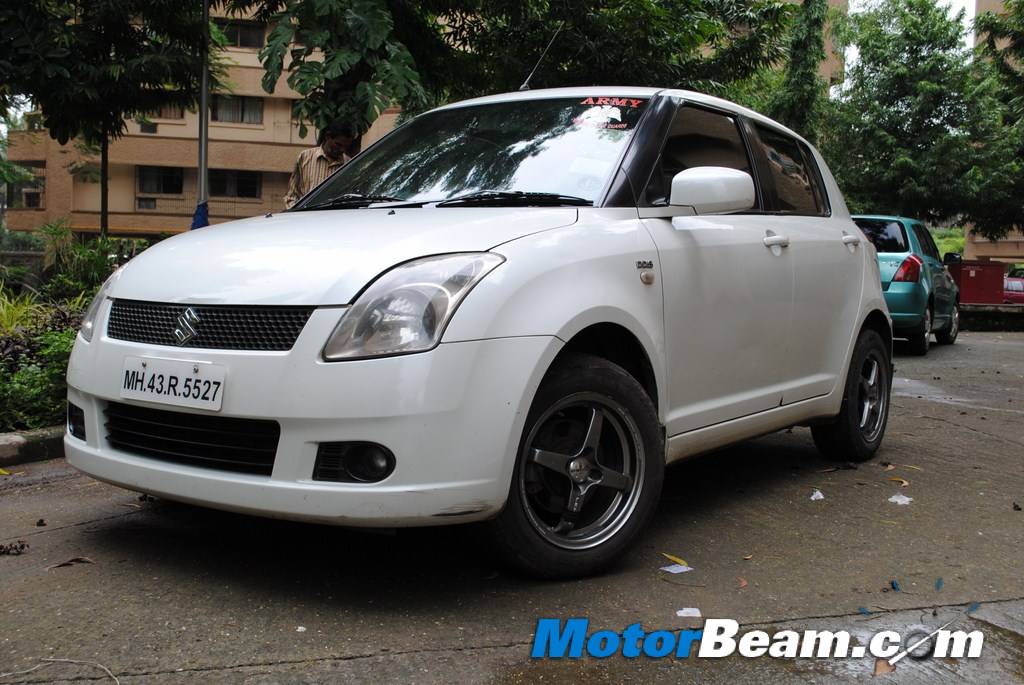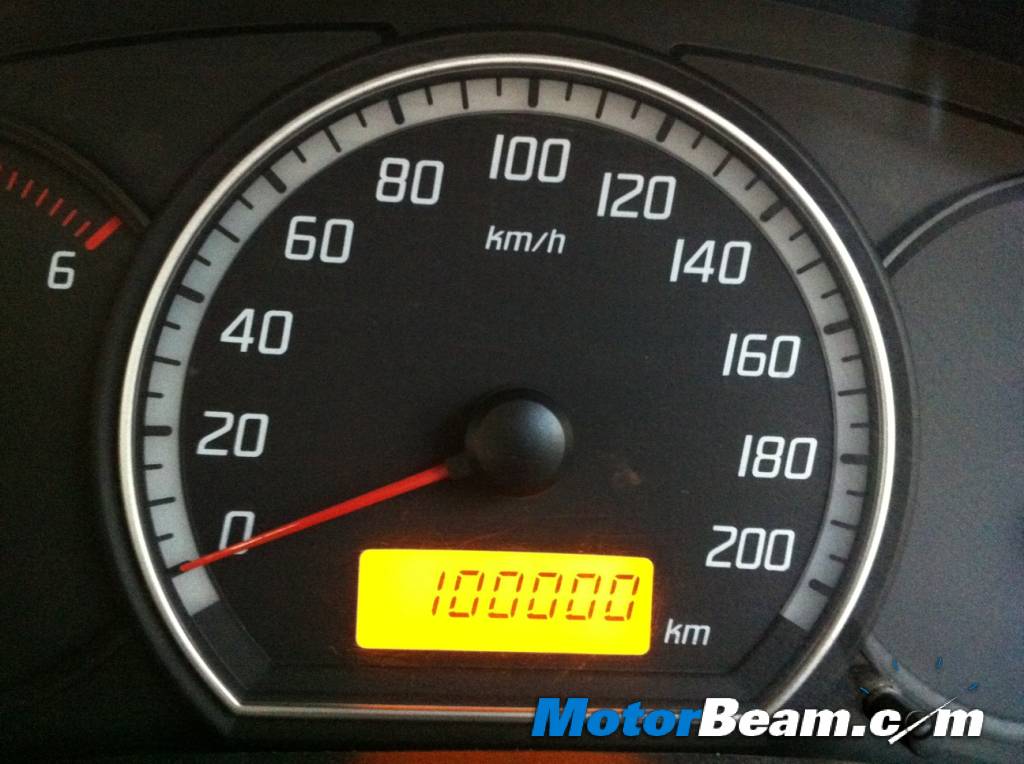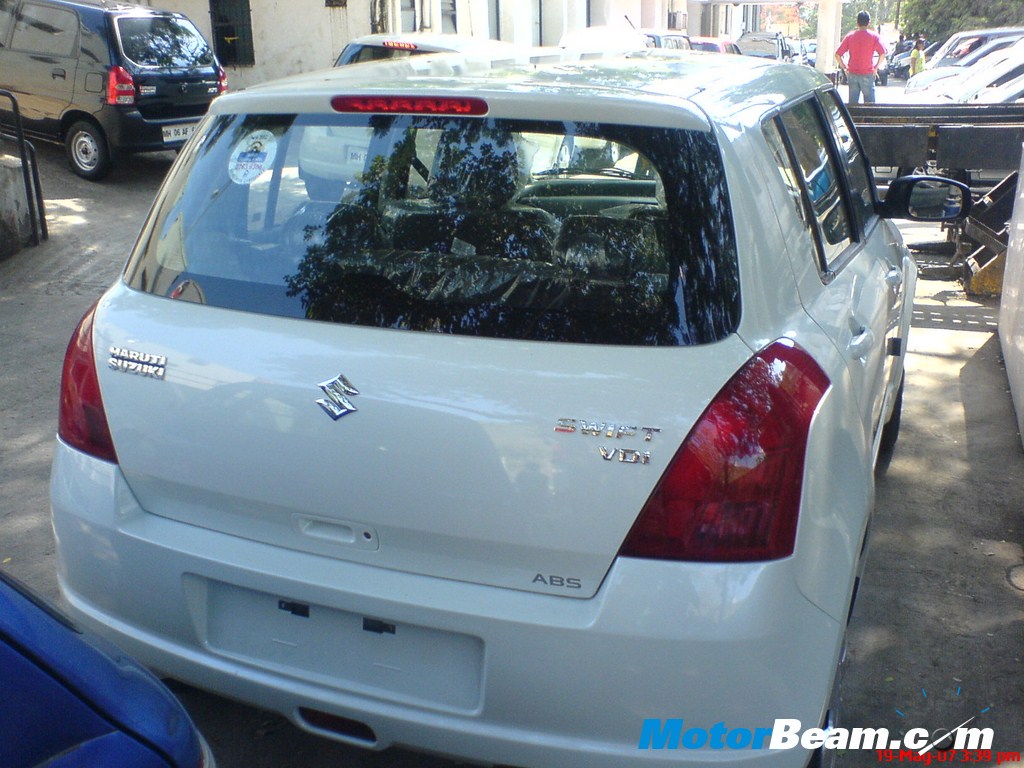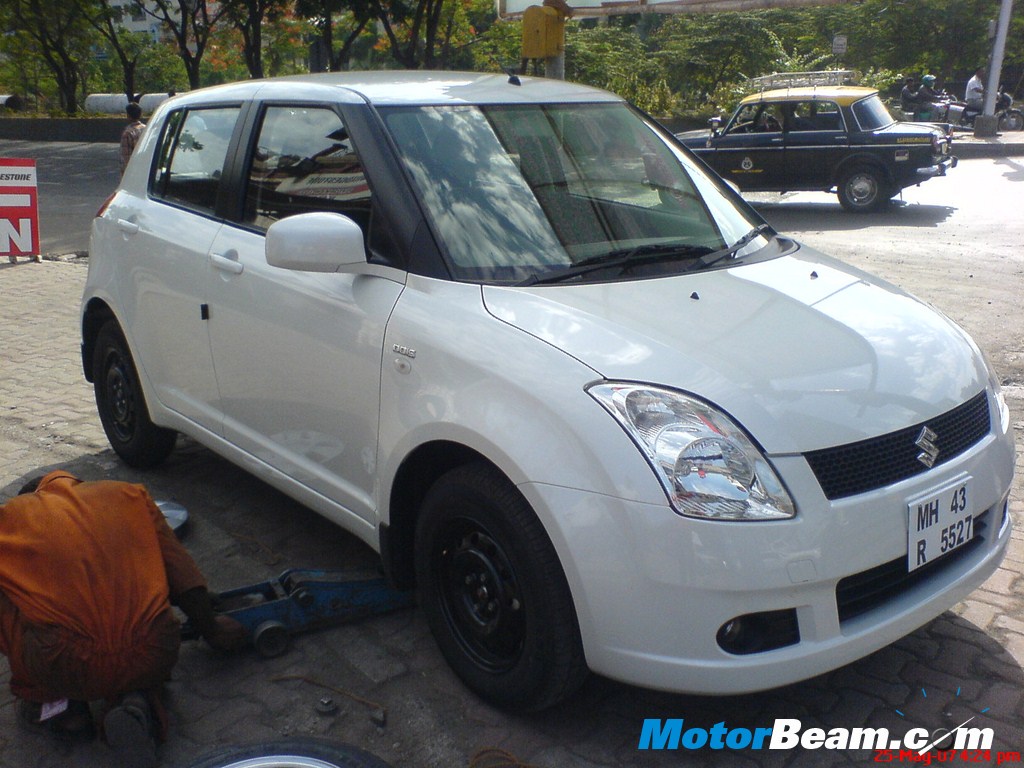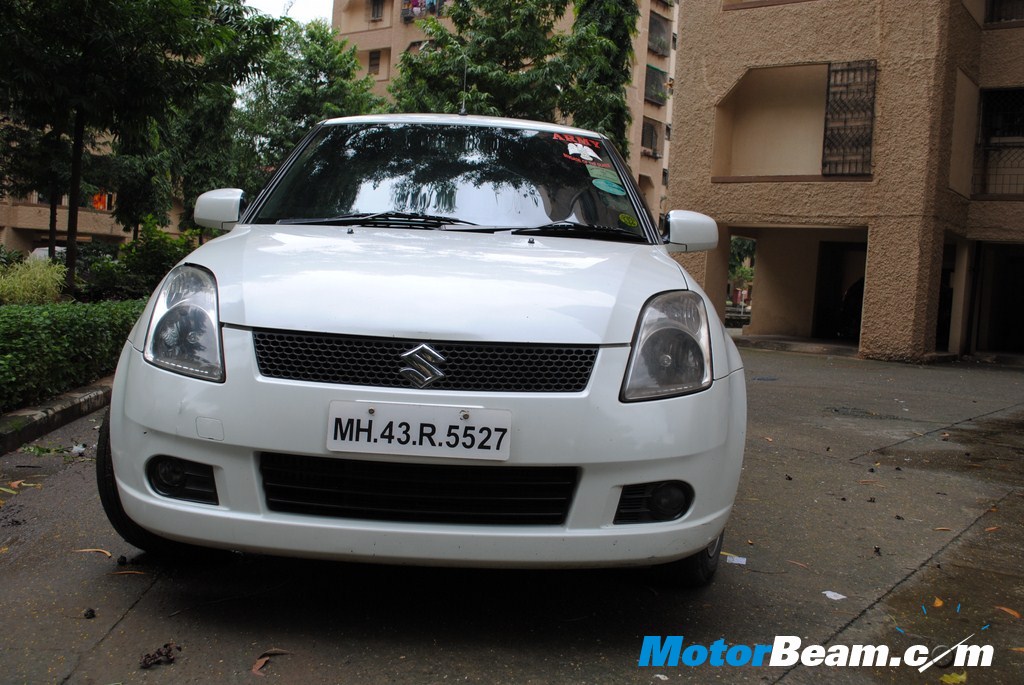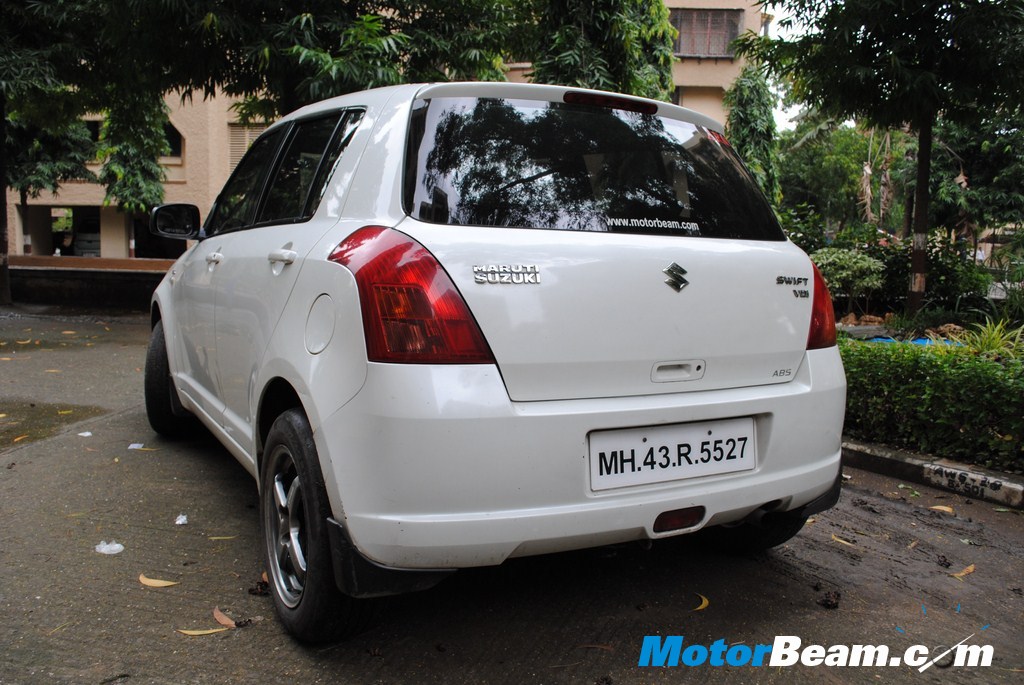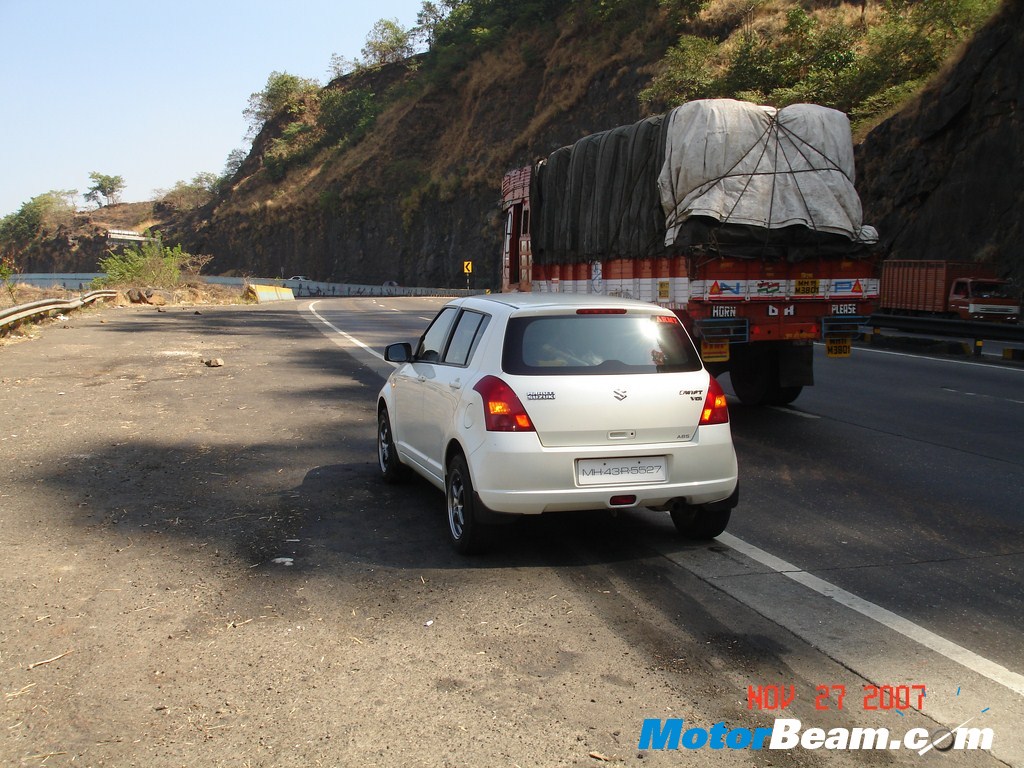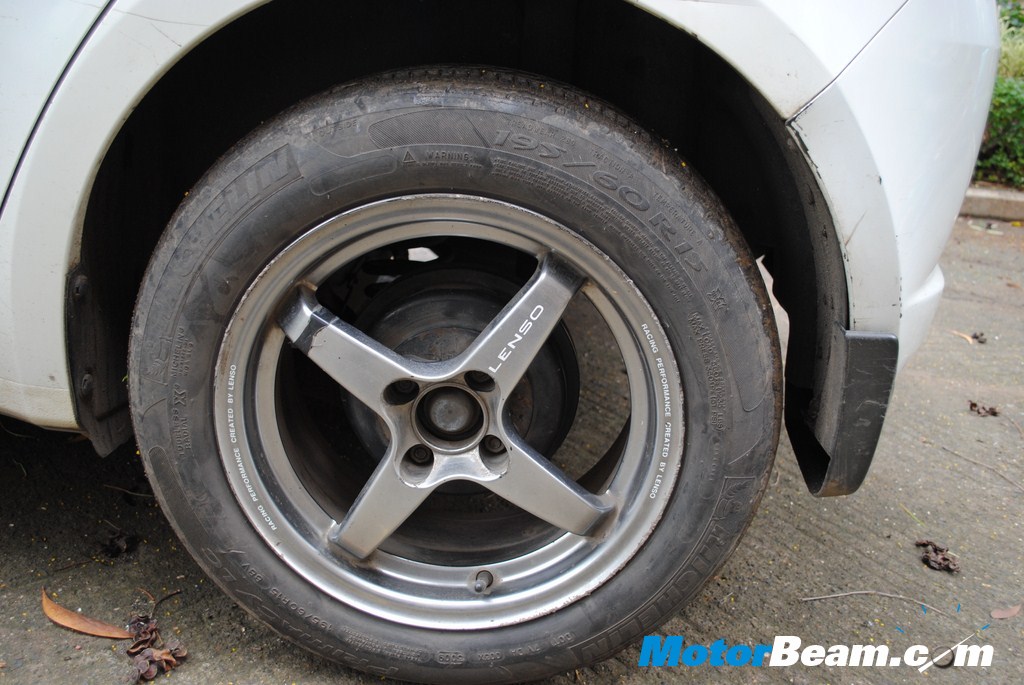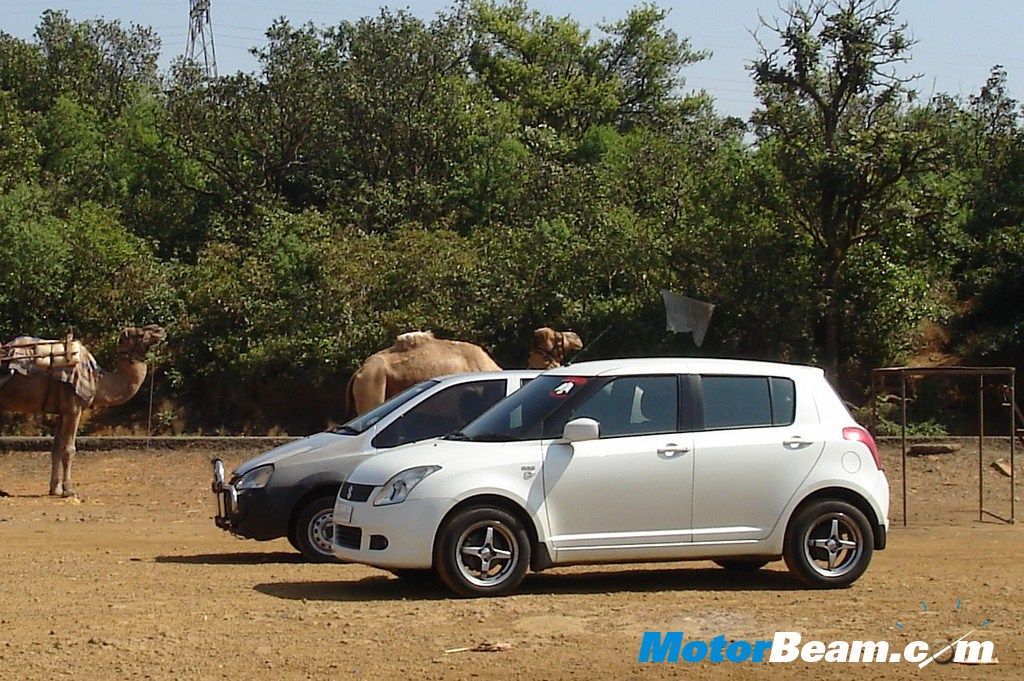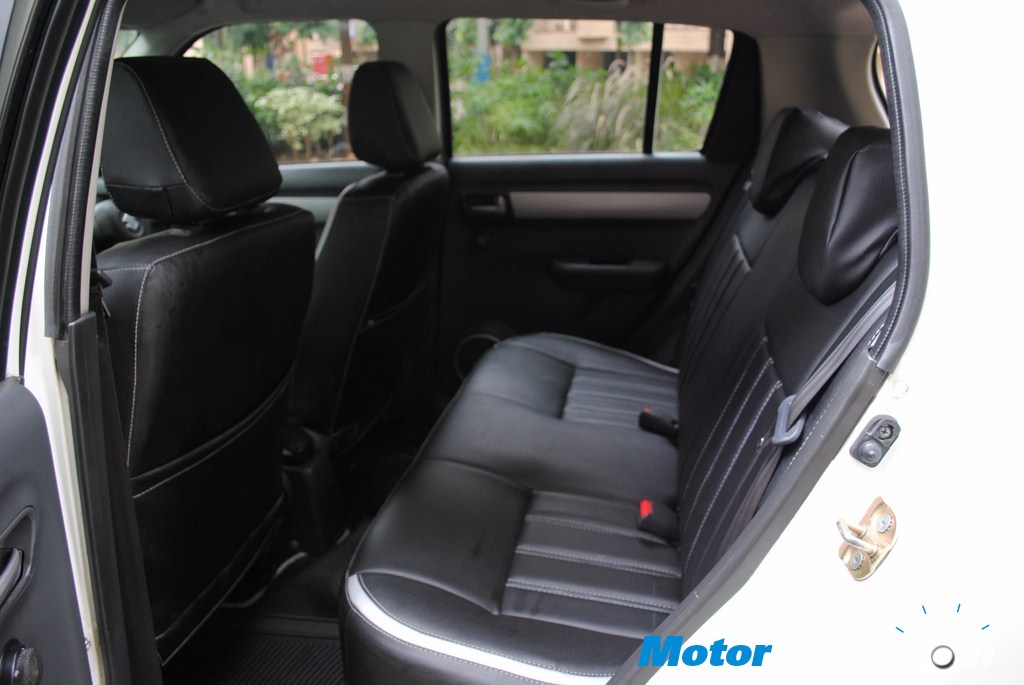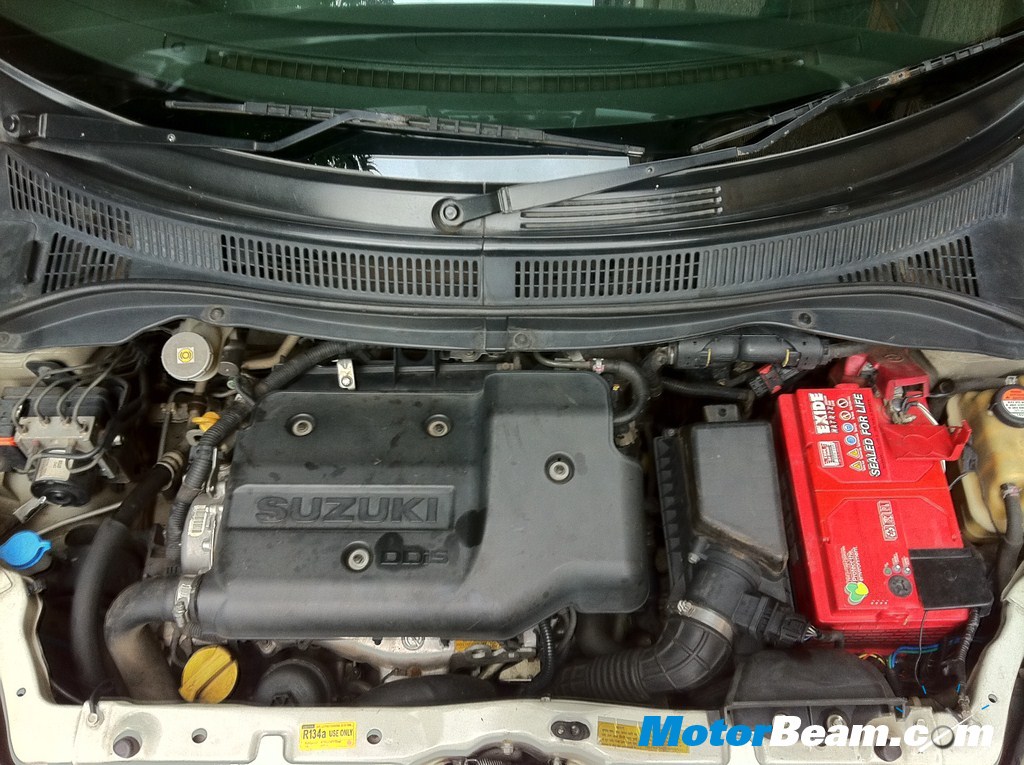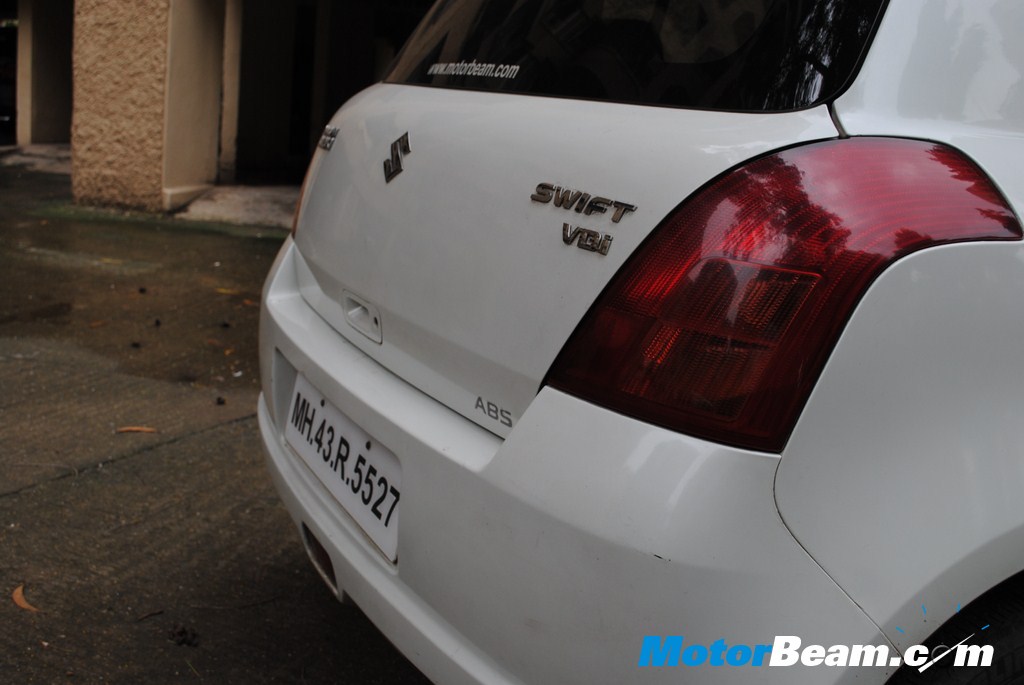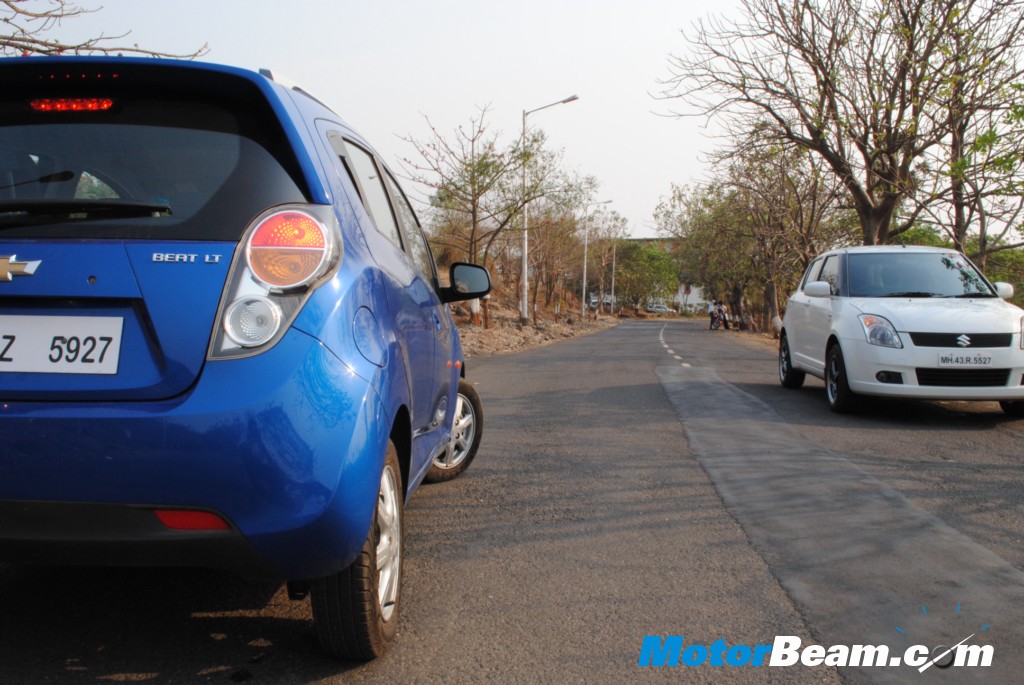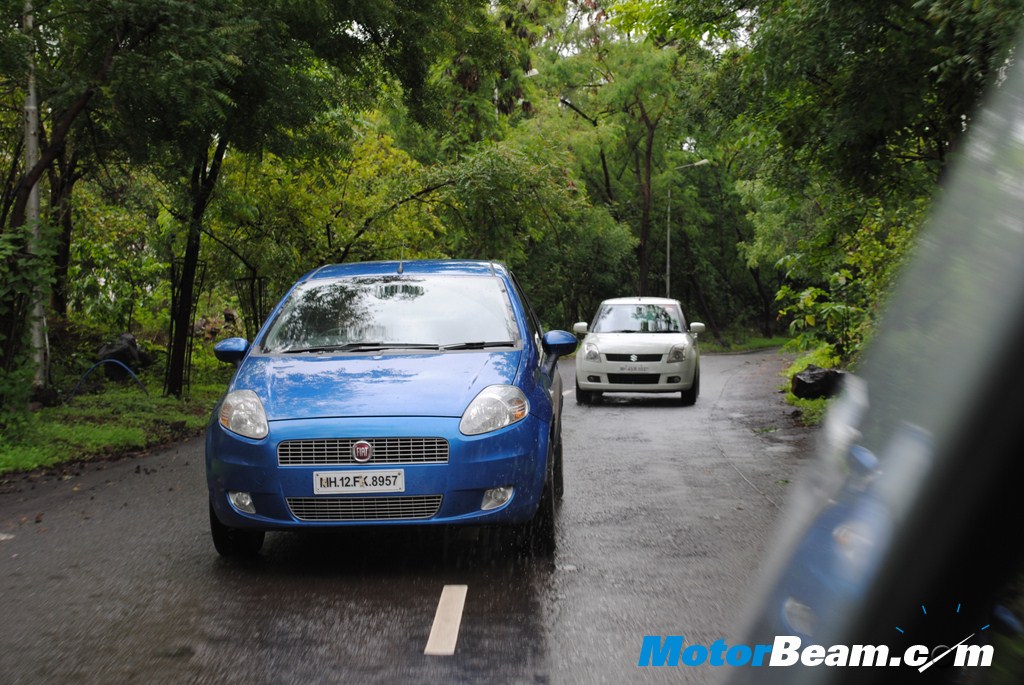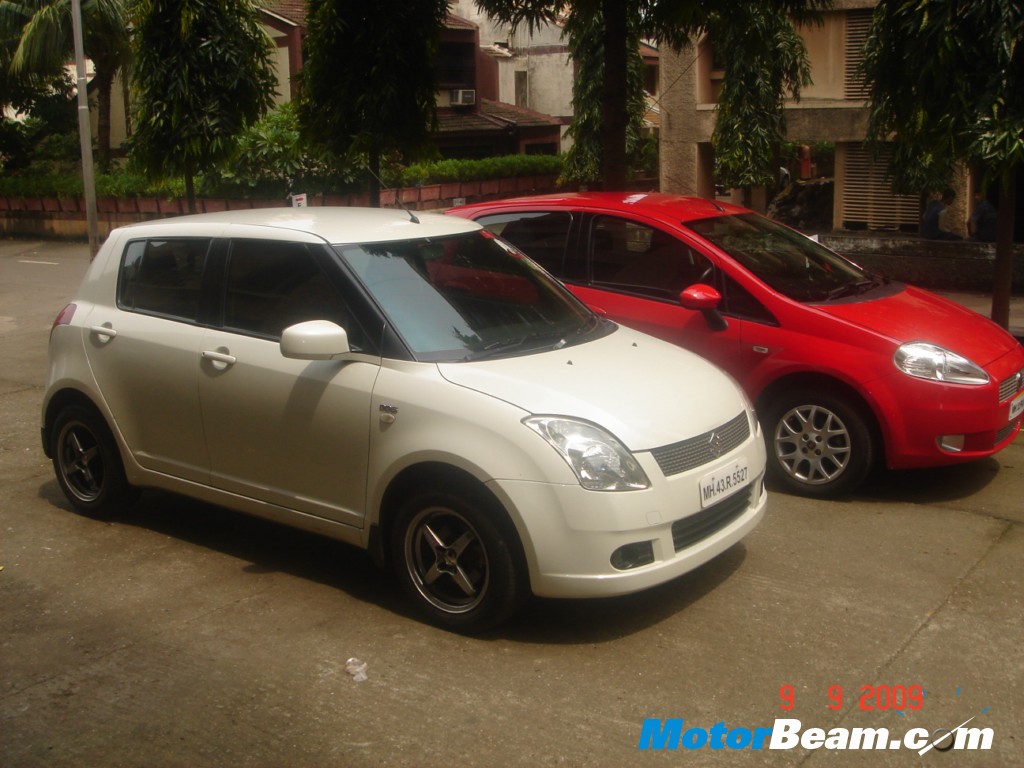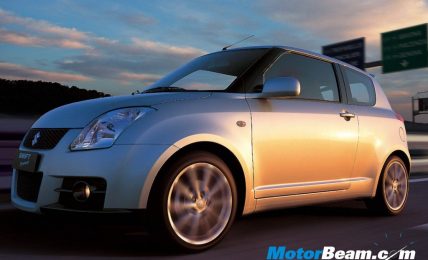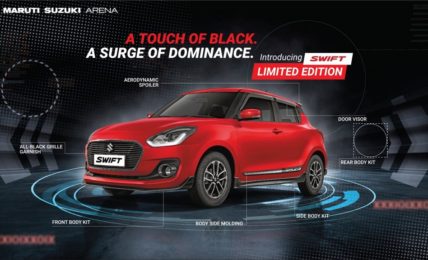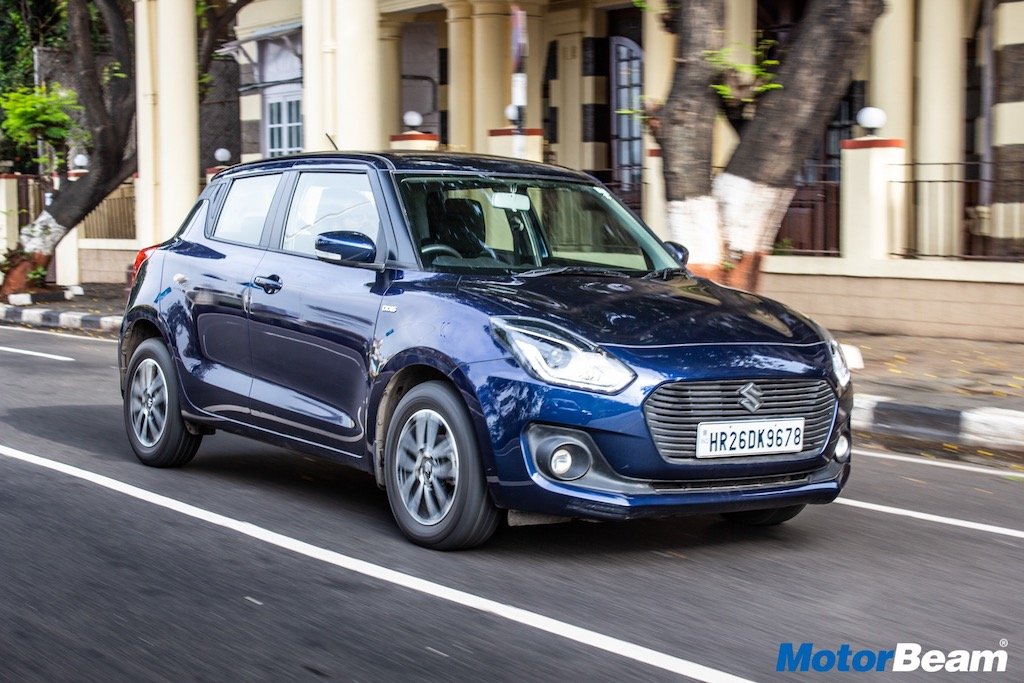Car tested: Maruti Suzuki Swift VDi (ABS)
Kms Done: 1,00,000
Mileage – 14.27 kmpl
Fuel Consumed – 7007.70 ltrs
Fuel Cost – Rs 2,87,316/-
Major Repair – Synchroniser Ring changed three times due to defective part
When we started way back in 2007, a good support vehicle was the need of the hour. The job of a support vehicle is essentially to carry cameras and equipment throughout the shoots for our test drive reviews. Knowing very well that it would be ticking the odometer more often than expected, we needed a vehicle which will give good mileage and will be relatively inexpensive to maintain. At that time, not many hatchbacks gave the option of a diesel engine, and when Maruti launched the Swift in diesel trim, it was instantly our choice.
The Swift diesel was launched in Jan 2007, and our booking of the Swift read VDi Abs (the top version available). The dealer had promised a delivery time of approximately 2 months. It was a month of waiting when we received a call from the sales guy, coaxing us to convert to a non ABS version, his defense was that ABS is not really required for Indian conditions and there may be more waiting for the ABS version than promised. This just goes to show how ignorant we, as Indians, are about much needed safety features. Besides ABS, this top end variant did not offer rear wiper and defogger, which prove to be helpful in rainy conditions.
The first step after delivery was to get rid of the rubbish 165 spec Jk tyres. With 75 bhp on tap and coupled with low end torque, many accidents were reported as most were not used to the frugal power of the 1.3 ltr multijet engine. These stock tyres offer poor grip and thus are accident prone. At that time, the international version of the Swift was sporting 195/60/15 rubber and we upgraded to the same. Among the list of upgrades was synthetic engine oil (Mobil 1 5W/40) and pioneer head unit with jbl speakers along with V cool, 99 percent heat rejection film .
All Swift’s manufactured in the month of May 2007 had an issue of defective synchronizer ring. For the sake of those who are unaware what that may be, a synchronizer ring is a ring with teeth, where the gears slot, similar to the ring around which the chain is attached in a bicycle. Maruti does not believe in recalling cars with inherent manufacturing defects, and one day when the 2nd and 3rd gear refused to slot, we rushed to the dealer immediately. Imagine driving in first gear and then directly shifting into fourth. The odometer read only 10000 km.
After through inspection, it was found that the syncronizer ring corresponding to the 2nd and 3rd gear had expanded and had to be replaced. Irony was that it took a full week to get hold of the part and since the gearbox is attached to the engine, the entire engine unit had to be demounted which took another 5 days. The same problem happened again, not once but twice at 30000 and 50000 km respectively. We were told its the same defective part which caused trouble this time around. We were deeply disappointed to know that Maruti had not done much to rectify the issue, let alone recall the cars. The positive part was Maruti’s excellent dealership experience and extended warranty which saved us more than a few thousands. The dealer even offered us a loaner car (Wagon R) till the time our vehicle was up and running.
Besides this major issue, our experience was hassle free. When the swift was launched in 2005, rattling was common in almost all the cars. Maruti had certainly stepped up the insulation but it was still not perfect. The major area was the boot. On opening the plastic panel, we found a loose clip inside which indeed was the culprit. A foam padding between the metal and plastic ensured that ratting was gone for good. Damping was also done in all the four doors.
Driving the top of the line variant, we missed the rear wiper and defogger. Driving in heavy rain on the expressway with absolutely zero visibility in the rear view mirrors can be risky job, especially with rich brats driving their dads latest sports car at suicidal speeds. Then you think about the safety features, another vital one is missing. Airbags are like insurance, you always want to have them but hope you never get to use them. Shame on Maruti for omitting these vital features on the top of the line variant. Even the low fuel warning light was sacrificed in the name of cost cutting. They have probably learned from their mistake and now offer the Zdi variant in the new Swift, which is practically loaded.
At 75009 km, we did away with our Michelin Energy XM tyres. Even after running so much, we could have easily squeezed another 10000 odd km but decided not to in the interest of safety. It was then the Michelin Primacy LC tyres which got ready to burn some rubber.
Engine note got louder as the kilometers ticked. At 90000 km, the engine was making a funny creaky sound, which nobody, including the service centre could diagnose. Since there was no drop in performance, we ignored it completely. The ride quality was average throughout and though the suspension softened over the period of time, it was far from ideal. Service schedule was followed with suspension overhaul done at 60K km. Surprisingly, not once was the clutch replaced. Usually the clutch burns out at 35k km but this one lasted beyond anybody’s comprehension.
Rear seat is probably the least comfortable in the segment. Long drives in the rear bench can get your back sore and the small window area adds a claustrophobic feel. It best to occupy the front seats as far as the Swift is concerned. On long runs, the boot space fell short too, we struggled to fit our luggage into the boot on many occasions.
Maruti sales are driven by the fact that servicing costs are really cheap. This is certainly a misnomer. Maruti service is cheap when it comes to their entry level cars such as the Alto and the Wagon R. Come to the Swift and its not as cheap as people sound it to be. On an average a paid service costs about 6 – 7 thousand rupees, which does not include anything other than routine servicing charges which include labour, parts (oil etc) and applicable taxes. The Swift diesel in marginally more expensive to maintain than its petrol counterpart, but the fuel savings it offers, its well worth it if your daily running is on the higher side.
The 1.3 Multijet engine proved to be a gem of an engine, and probably the only reason Fiat is surviving today. Great performance and great efficiency never go together but this engine finds the sweet spot between the two. The best mileage we got was 21.3 kmpl on a long highway run and the worst was about 11.2 kmpl in clogged city traffic. Since our driving was 60:40, city and highway respectively and considering its takes us a good 2 hrs to cover a distance of 30 km (in city), it means the engine has run at idle far more than the odometer suggests.
Maruti service deserves a special mention. The dealership (Automotive Manufatcurers, Navi Mumbai) ensured that the car was delivered quickly after servicing (barring the synchroniser ring issue, where the delay was due to non availability of parts). Servicing criterion’s such as explanation on type of job to be done, costing, washing etc was done with utmost professionalism.
With age on its side we decided to retire our favorite support vehicle, now since the Swift has gone, we need a replacement car. We have already decided on it. You would want to guess which car would be replacing our dear Swift!!
What’s Cool
* Engine Performace
* Fuel Efficiency
* Maruti Service
What’s Not So Cool
* Built Quality issues
* Absence of Rear Wiper, Defogger & Airbags
* Small Boot Space
* Rear Legroom
A few pictures of our long term Maruti Swift playing support car –
1. Ford Figo vs Maruti Swift Comparo
[singlepic id=5227 w=540 h=375 float=center]
2. With the Chevrolet Beat
3. Playing supporting role in the Volkswagen Polo vs Fiat Grande Punto Shootout
4. Battle of the Multijets


